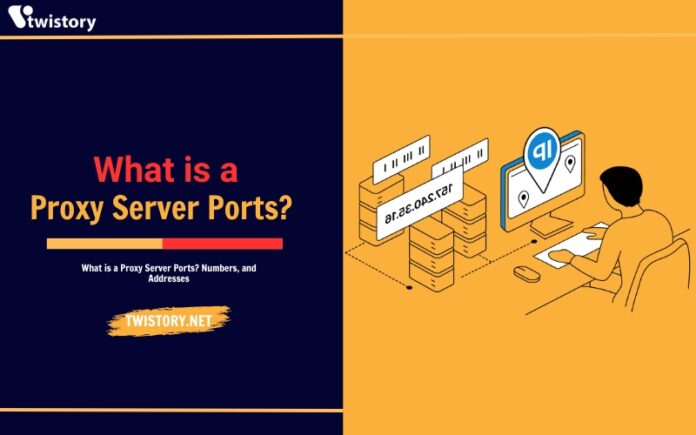If you’ve been keeping up with our content, you’re probably well-acquainted with the term IP address – a distinct identifier necessary for all devices connected to the Internet to exchange data. Alongside each IP address, you might have noticed a pattern that includes a colon followed by a number within the range of 0 to 65535, this pattern is recognized as a port number.
In this article, we will delve into the nuances of port numbers, emphasizing their pivotal role in the realm of Proxy Server Ports and proxy servers. We’ll decode the essence of a proxy port and the weight of its numerical designation. Moreover, we’ll dissect the logic behind the unique port numbering systems adopted by proxy providers, which are strategically devised to meet their specialized needs.
With that said, let’s embark on a journey to demystify the complexities of Proxy Server Ports and port numbering
Understanding Proxy Server Ports: A Simplified Explanation
Before we dive into the details of proxy server ports, it’s important to understand the general concept of Internet ports that are paired with IP addresses. Let’s begin by defining what a proxy server port is, and then we’ll look into the numbering conventions that have been established by the web community.
To demystify the idea of a port in layman’s terms, consider an IP address as the address of a house with multiple occupants. If you want to send a letter to a specific person, you need to include their name on the envelope.
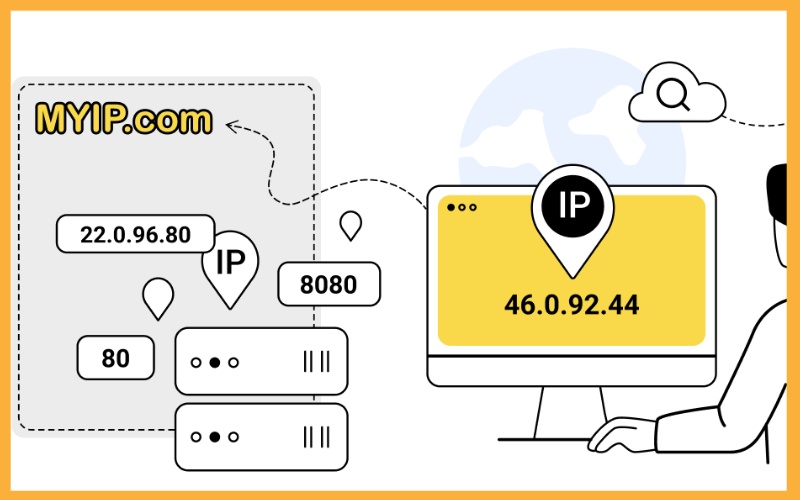
In the context of the Internet, an IP address is akin to a web server connected to the Net, and the ports are akin to individual services for various purposes, such as email, FTP data transfer, web browsing, etc.
Port numbers are standardized based on their usage, and we’ll go over some of these standards in a bit. Although certain numbers are allocated for proxy server ports, proxy providers sometimes choose not to use these designated numbers. To obscure the fact that IPs are proxies, ports like 444, 9050, 9580, and 1080, which are officially earmarked for proxies, are rarely employed.
So, what is considered a safe IP for a proxy to use? It’s any IP that the proxy provider determines to be secure enough to evade detection by Internet Service Providers, who would otherwise quickly spot proxy IPs.
It’s essential to recognize that the proxy address and proxy server port numbers you’ll work with are the access points to the proxy servers. These endpoints enable you to obtain IP addresses that are crucial for connecting to the websites you’re targeting.
Proxy providers generally present two types of server access addresses: one that looks like an IP address and another that’s structured like a URL, both followed by a proxy server port number.
Discovering Your Proxy Server’s Address and Port Number
If you’re wondering, “What is the proxy address of my proxy?” there’s a handy tool that can assist you. By visiting myip.com, you can uncover the proxy server address and port number directly in your browser, applicable to both DC and residential proxies. Should you opt for rotating proxies, bear in mind that the IP address will vary with each proxy session.
An Overview of HTTP(S) Proxy Port Functions
HTTP-based proxies are prevalent due to their robust performance and security features, making them ideal for tasks such as web scraping.
Typically, HTTP proxies utilize three main ports: 80, 8080, and 8008. These ports facilitate the proxy’s communication with the web, ensuring efficient data transfer and reliable online operations.
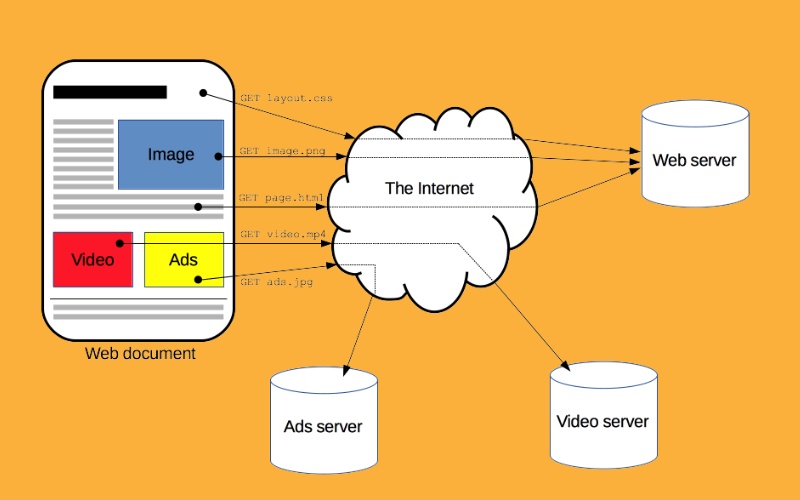
The Role of Proxy Ports 80, 8080, 8008 in Web Traffic
Port 80 proxies are frequently encountered and operate using the HTTP protocol. This protocol is considered less secure compared to HTTPS, as it transmits data in unencrypted plain text. These proxies are often utilized in environments offering free public Wi-Fi to redirect traffic or for caching purposes.
Proxy providers also offer ports 8008 and 8080 as substitutes for port 80, providing additional options for proxy services.
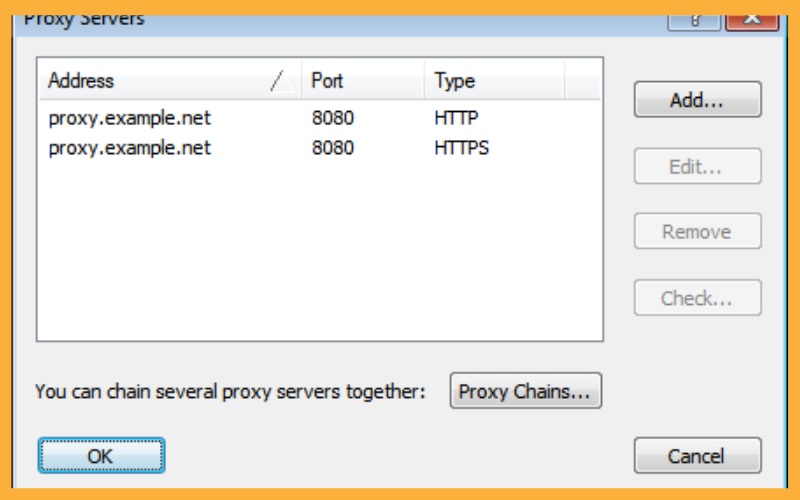
Securing Connections: The Significance of Proxy Port 443
When proxies operate under the HTTPS (HTTP Secure) protocol, they typically utilize port 443. This port is also a common choice for VPN servers, indicating a secure communication channel.
Regarding SOCKS Proxy Ports:
SOCKS protocol proxies, which facilitate data transfer, generally do not have specific ports assigned to them. Although there are two ports traditionally reserved for SOCKS proxy endpoints, proxy providers often disregard this convention.
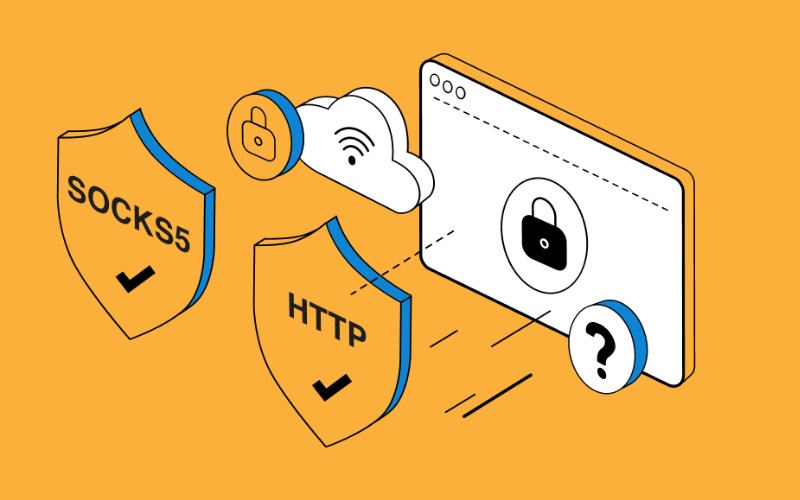
Exploring the Use of Proxy Ports 1080 and 1081
The two ports traditionally associated with SOCKS proxies are often avoided by providers, as their use could be easily detected by ISPs, who would recognize them as proxy-related. This avoidance contributes to the infrequency with which these specific proxy ports are utilized. For a detailed comparison of SOCKS and HTTP proxies, consider exploring our in-depth article on the topic.
What is Squid Proxy Port (3128)?
The Squid proxy port, typically designated as port 3128, is commonly employed for caching or forwarding proxies. While this port number is the default for caching proxies, it is also utilized in conjunction with other ports for various proxy types, including ports 80, 8080, and 443 among others.
Commonly Blocked Proxy Ports
While it may seem that a multitude of ports are available for use, certain ports are often restricted or rendered inaccessible by your computer’s operating system for various reasons.
These restrictions can stem from security measures aimed at thwarting different types of cyber intrusions, or they may be due to confidential protocols known only to your system administrator.
This principle of port closure also applies to proxy servers. Proxy providers might selectively close ports as a strategy to combat spam, among other reasons.
A notable example is port 25, which is commonly closed to regulate SMTP (Simple Mail Transfer Protocol) for email management, primarily to curb spam. Many ISPs proactively block this port as a standard precaution.
Additionally, ports ranging from 6881 to 6889 are sometimes shut down to prevent illicit activities such as torrenting. These ports are typically associated with BitTorrent and may be blocked to discourage the use of torrents.
In essence, proxy servers possess the autonomy to manage their ports, opening or closing them as deemed necessary.
>> Explore more: What Is Proxy Server? How Does It Work & What Are Its Benefits?
Conclusion: Proxy Server Ports
In conclusion, grasping the complexities of proxy server ports, along with the broader aspects of proxy servers such as their numbers and addresses, is crucial for adeptly maneuvering through the digital world. Whether you’re deeply immersed in tech or just embarking on your journey towards understanding online privacy and security, the insights into proxy server ports can guide you towards more strategic and informed choices.
For more insightful and practical information on this and a myriad of other tech-related topics, be sure to follow Twistory. Stay updated with our latest articles and tips that can enhance your online experience and equip you with the tools to stay ahead in the ever-evolving world of technology.

